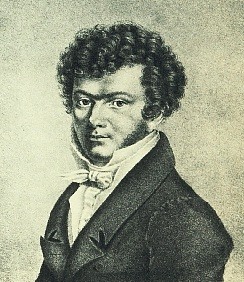Ferdinand Ries (28 November 1784 (baptised) – 13 January 1838) was a German composer. Ries was a friend, pupil and secretary of Ludwig van Beethoven.
Introduction et Rondo Brillant, Op.144
Christopher Hinterhuber (piano), New Zealand Symphony Orchestra, Uwe Grodd (conductor)
"Unlike his teacher Beethoven, whose deafness drove him from the concert platform relatively early in his career, Ries remained one of Europe's most celebrated virtuosi until well into the 1830s. His receptiveness to new musical trends and his ability to develop and exploit them was as fundamental to his success as an artist as it was to his close contemporary Hummel. This quality of Ries is reflected in the formal diversity of his works for piano and orchestra. In addition to concertos, there are several sets of variations, two large-scale rondos and a polonaise. Beethoven, by comparison, restricted himself principally to the solo concerto, the genre Mozart had brought to the peak of perfection in the mid-1780s, although the Choral Fantasia, Op. 80, with its lengthy fantasia-like introduction for the piano and subsequent theme and variations structure, bears some similarity to the sets of variations later written by his pupil.
The Introduction et Rondeau brillant, Op. 144, composed in 1825, follows the structural models that he had developed in the works composed since the 'Swedish' Variations of 1813. In common with several of these works, the rondo theme of Op. 144 is foreshadowed in the introduction. The theme is not derived from the arresting opening bars in the orchestra, however, but from the idea presented first by the piano. Although this theme and the rondo theme that follows are closely related, the change of tempo and recasting of the surface detail utterly transforms its character. The return of a truncated version of the original introductory theme towards the end of the movement reasserts the fundamental importance of the link between the two major sections of the work while highlighting their expressive differences. It is as typical of Ries's care with structural planning, the consequence of his deep admiration for Beethoven's music, as the virtuosic demands of the solo writing is of his distinctive style of pianism. The clarity and brilliance of Ries's orchestration also contributes to the appeal of the work. (from album notes by Allan Badley)
